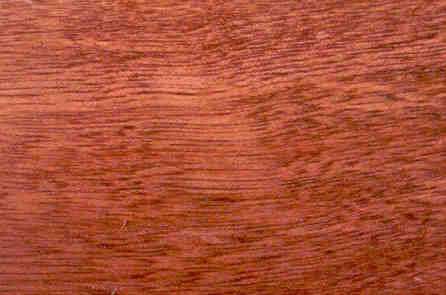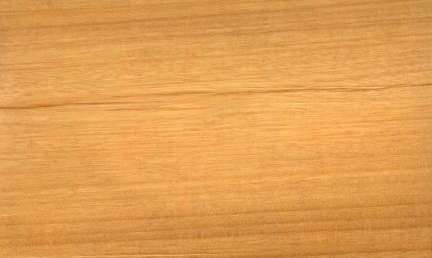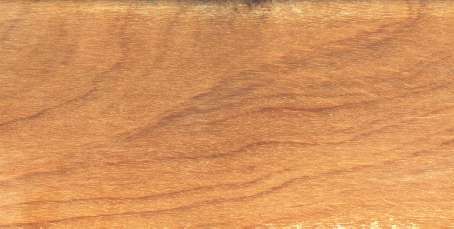  
Capomo (Brosimum alicastrum)
Family: Moraceae
Common names: A-agl, Apomo, Ash, Breadnut, Breadnut of Jamaica, Breadnut tree, Campono, Capome, Capomo, Charo, Feguo, Guaimaro, Guaimaro comestible, Guayamero, Hairi, Hairi-te, Hoja ramon, Huje, Huji, Jauri, Juandiego, Jushapo, Juskapu, Lan-fe-la, Manata, Mare, Masi, Masicaron, Masico, Masiquilla, Mastate, Mesica, Moho, Moj-cuji, Mojote, Moju, Mondongo, Moussara, Muiratinga, Murure, Nazareno, Ojite, Ojoche, Ojoche blanco, Ojochillo, Ojuste, Oox, Osh, Ox, Oxitl, Oxotzin, Pasita, Ramon, Ramon blanco, Ramon de Mejico, Ramon de Mexico, Ramoon, Samaritano Juan Diego, Satine, Talcoite, Tillo, Tlatacoyic, Tonaco, Tunumi-tajan, Ujuste
Distributed in: Belize, Brazil, Columbia, Cuba, Dominican Republic, Ecuador, El Salvador, French Guiana, Guatemala, Guyana, Haiti, Honduras, Jamaica, Mexico, Panama, Peru, Trinidad and Tobago, Venezuela (Central America, Latin America, Oceania and S.E. Asia)
Distribution overview: Caribbean, or Mexico and Central America to tropical South America. It is an edible-seeded tree. Its Spanish name is ramon and the seeds, leaves and twigs are prized as stock feed.
Common uses: Boxes and crates, Building construction, Cabinetmaking, Chairs, Construction, Decorative veneer, Desks, Domestic flooring, Factory construction, Figured veneer, Fine furniture, Flooring, Fuelwood, Furniture , Furniture components, Furniture squares or stock, Furniture, Handles, Handles: woodworking tools, Heavy construction, Light construction, Rustic furniture, Shafts/Handles, Sub-flooring, Tables , Tool handles, Utility furniture, Vehicle parts, Veneer, Veneer: decorative
Environment profile: Widespread
Colors: the heart isYellow to golden-yellow to orange, Yellowish whiteand the sapwoodColor not distinct from heartwood, White to yellow.The grain isStriped figure, the textureFine to mediumand the lusterPronounced
Natural durability: Susceptible to attack from termites (Isoptera), Vulnerable to brown-rot and white-rot fungi
Odor: No specific smell or taste
Silica Content: Likely to have significant impact on machining
Kiln Schedules: Drying (speed) is fast
Drying Defects: Moderate twist/warp
Ease of Drying: Rapidly
Tree Identification: Bole/stem form is straight
Comments: Cooked seeds are edible General finishing qualities are rated as good
Blunting Effect: Blunting effect on machining is moderate
Boring: Easy
Cutting Resistance: Cutting resistance with dry wood is moderate
Mortising: Sharp cutting edges are necessary for easy mortise
Moulding: Poor moulding
Movement in Service: Poor moulding
Nailing: Difficult to nail
Planing: Requires specially tipped cutters
Response to hand tools: Moderate working qualities
Sanding: Good sanding finish
Veneering qualities: Often quartered into veneers to displays its cross-ripple figure, Suitable for slicing
Steam bending: Good
Screwing: Good screwing properties
; Turning: Good results
Polishing: Polishes well without grain filling;
- Numerical data Metric
- Numerical data English
- Strength properties
- References
 |
 |
 |
 |
| Item |
Green |
Dry |
Metric |
| Specific Gravity |
0,59 |
|
|
| Density |
|
849 |
kg/m3 |
| Bending Strength |
1026 |
1338 |
kg/cm2 |
| Crushing Strength |
485 |
668 |
kg/cm2 |
| Hardness |
|
804 |
kg |
| Impact Strength |
|
|
cm |
| Shearing Strength |
|
|
kg/cm2 |
| Stiffness |
125 |
139 |
1000 kg/cm2 |
| Tangential Shrinkage |
8 |
|
% |
| Radial Shrinkage |
4 |
|
% |
| Weight |
913 |
833 |
kg/m3 |
| Maximum Load |
|
|
cm-kg/cm3 |
| Toughness |
|
|
cm-kg |
| Static Bending |
|
|
kg/cm2 |
|
 |  |  |  | | Item | Green | Dry | English | | Bending Strength | 14598 | 19034 | psi | | Density | | 53 | lbs/ft3 | | Hardness | | 1774 | lbs | | Maximum Crushing Strength | 6899 | 9509 | psi | | Stiffness | 1790 | 1979 | 1000 psi | | Specific Gravity | 0.59 | | | | Weight | 57 | 52 | lbs/ft3 | | Radial Shrinkage | 4 | | % | | Tangential Shrinkage | 8 | | % | | Volumetric Shrinkage | 15 | | % | |
Density (dry weight) = 46-52 lbs/cu. ft. 0
Dnesity (dry wieght) = 53-60 lbs/cu. ft.
Shrinkage, Tangential = fairly large
Modulus of Elasticity (stiffness) = medium
Max. crushing strength = high
Density (dry weight) = 61-67 lbs/cu.ft.
Density (dry weight) = 38-45 lbs/cu. ft.
Bending strength (MOR) = very high
Bending strength (MOR) = medium
Bending strength (MOR) = high
Shrinkage, Tangential = moderate
Resists denting and marring
Heavy
Hardness = medium
Hardness (side grain) = medium
Hardness (side grain) = hard
Density = high
Compression strength (parallel to grain) = high
Bending strength (MOR) = very low
Belize,1946,42 Secondary Hardwood Timbers of British Honduras,British Honduras Forest Department Bulletin,No.1Bodig, J. and B. A. Jayne. 1982. Mechanics of Wood and Wood Composites. Van Nostrand Reinhold Company, New York.Brown, W.H.,1969,Properties and uses of Tropical hardwoods in the United Kingdom. Part 1,Nonstructural properties and uses.,Conference on Tropical hardwoods SC-5/TN-5, Syracuse UniversityCAOBA International, San Francisco, California. 1993. Personal Communication.Chudnoff, M.,1984,Tropical Timbers of the World,U.S.A. Department of Agriculture, Forest Service, Forest Products,Laboratory, Madison.Constantine, Jr., A. J. 1959.Know Your Woods - A Complete Guide to Trees, Woods, and Veneers.Revised Edition.Revised by H.J. Hobbs.Charles Scribner's Sons, New York.Davis, E.M.,1949,Exploratory tests in machining and related properties of 15 Tropical,American Hardwoods,U.S.A. Department of Agriculture, Forest Products Laboratory, Madison,Report,No.1744Erfurth, T., Rusche, H.,1976,The Marketing of Tropical Wood B. Wood Species from S. American Tropical,Moist Forests,F.A.O. Forestry DepartmentFlores Rodriguez, L.J.,1969,Description Caracteristicas y usos de 25 Maderas tropicales,Mexicanas,Camera Nacional de la Industria de la Construccion Serie Maderas de MexicoFors, A.J.,1965,Maderas Cubanas,Inst. Nac. Ref. Agraria La HabaraHarrar, E.S.,1942,Some Physical Properties of Modern Cabinet Woods 3. Directional and Volume,Shrinkage,Tropical Woods,9(71, pp26-32Kribs, D.A.,1950,Commercial and Foreign Woods on the American Market (a manual to their,structure, identification, uses and distribution,U.S.A. Penn. State College, Tropical Woods LaboratoryMarshall, R.C.,1934,Trees of Trinidad and Tobago,Government Printer Port of Spain TrinidadMarshall, R.C.,1939,Silviculture of the trees of Trinidad and Tobago - British West Indies,O.U.P.,LondonPennington, T.D., Sarukhan, J.,1968,Manual para la Identificacion de campo de los Principales Arboles,Tropicales de Mexico,Inst. Nac. Inv. For. MexicoPerpetua Hardwoods.Sea Star Trading Co. - Purveyors of Fine Wood.Newport, Oregon.Personal Communication, 1993.Record, S.J., Hess, R.W.,1940,American Woods of the Family Moraceae,Tropical Woods,8(61,pp11-54Record, S.J., Hess, R.W.,1943,Timbers of the New World,Yale University PressSaks, E.V.,1954,Tropical Hardwoods for veneer Production in Mexico,Caribbean Forester,15(3&4, pp112-9Simpson, W.T. and J.A. Sagoe. 1991. Relative Drying Times of 650 Tropical Woods : Estimation by Green Moisture Content, Specific Gravity, and Green Weight Density.United States Department of Agriculture (USDA, Forest Service, General Technical Report FPL-GTR-71, Forest Products Laboratory, Madison, Wisconsin.Swabey, C.,1941,The Principal Timbers of Jamaica,Department of Science and Agriculture Jamaica Bulletin No.29Takahashi, A.,1975,Compilation of data on the Mechanical Properties of Foreign Woods (Part 2,Central and South America,Shimane University, Japan, Research Report on Foreign Wood No.4WCMC. 1992. Conservation Status Listing - Trees and Timbers of the World. World Conservation Monitoring Center-Plants Programme, Cambridge, CB3 ODL, United Kingdom.
|










